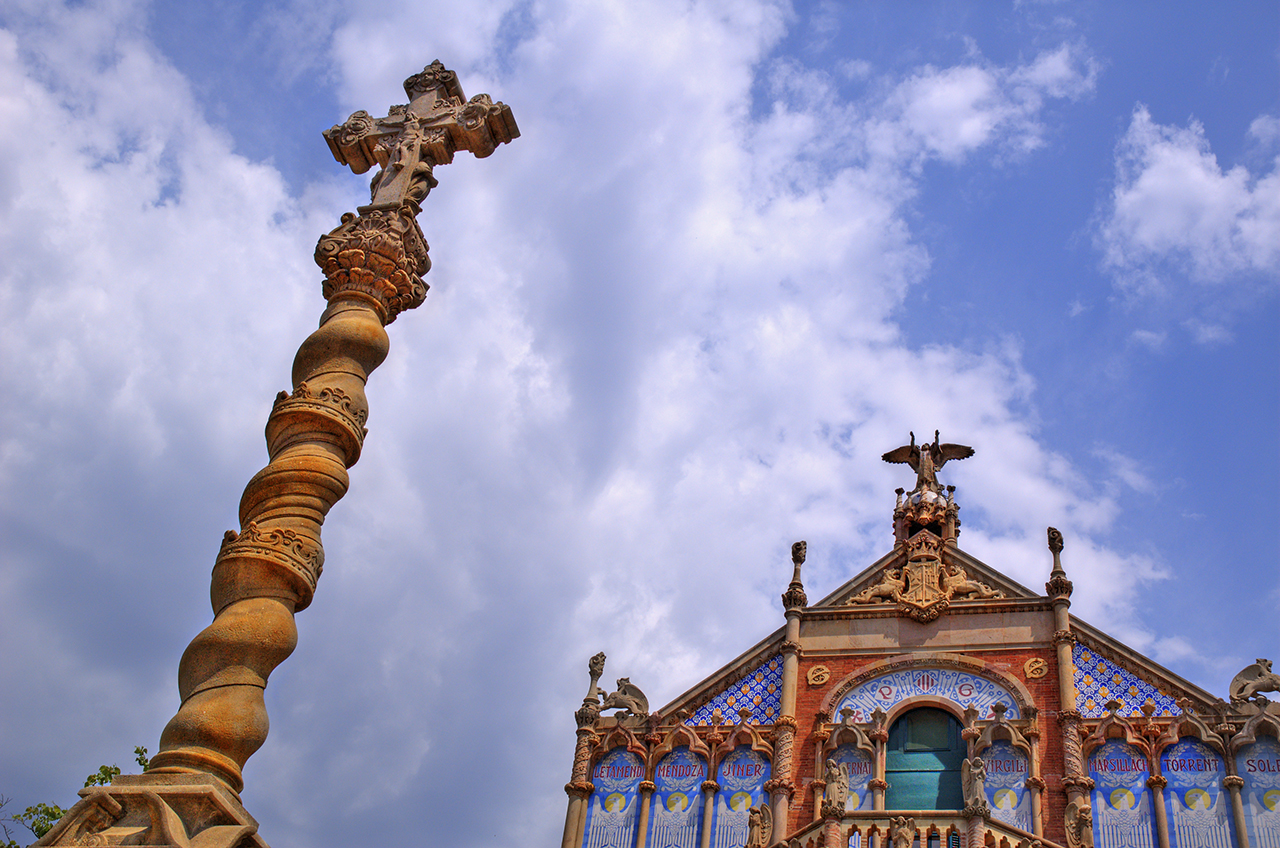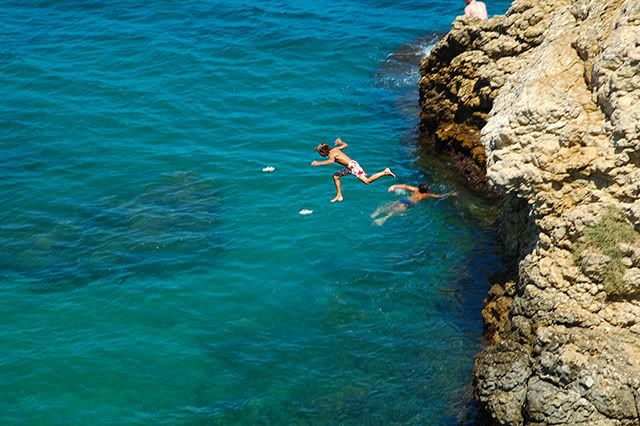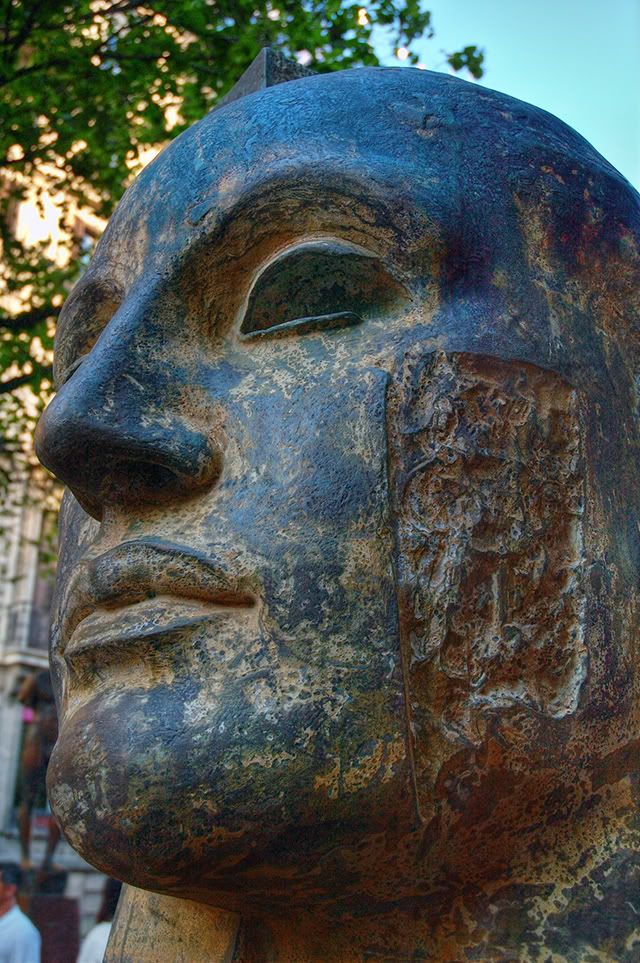Barcelona photos: Daily photographs of Barcelona, Spain. Pictures of a modern city with travel tips in a personal photoblog. A photography and travel site. Art, architecture, people and traditions. Travel to Barcelona through my camera, know more about our city and towns nearby. Welcome!
Wanna be featured?
August 11, 2007
August 10, 2007
Barcelona Walls Remnants
The History of Barcelona's City Walls
Barcelona is a city with a long and rich history, and its city walls are a testament to that. The first walls were built in the 3rd century BC, when Barcelona was a Roman colony. These walls were made of stone and earth, and they surrounded the city for about 2 kilometers.
In the 10th century, the Moors conquered Barcelona, and they built new walls around the city. These walls were made of brick, and they were much larger than the Roman walls. They surrounded the city for about 5 kilometers.
In the 13th century, the Christians reconquered Barcelona, and they began to build new walls. These walls were made of stone, and they were even larger than the Moorish walls. They surrounded the city for about 10 kilometers.
The city walls of Barcelona were used for centuries to protect the city from invaders. However, they began to fall into disrepair in the 18th century.
In the 19th century, the walls were finally demolished, and they were replaced by a ring of boulevards.
Today, only a few fragments of the city walls of Barcelona remain. However, these fragments provide a glimpse into the city's rich history.
The Remains of the City Walls
The most significant remains of the city walls of Barcelona are located in the Gothic Quarter. These remains include the Portal del Bisbe, the
Portal de Santa Madrona, and the Torre del Rellotge.
The Portal del Bisbe is a gate that was built in the 14th century. It is one of the most impressive examples of Gothic architecture in Barcelona.
The Portal de Santa Madrona is another gate that was built in the 14th century. It is located near the Plaça del Rei, which is the site of the former royal palace of Barcelona.
The Torre del Rellotge is a tower that was built in the 14th century. It is located in the Plaça de Sant Jaume, which is the main square of Barcelona. The tower was originally used as a watchtower, and it now houses a clock.
In addition to these significant remains, there are also a number of other fragments of the city walls of Barcelona scattered throughout the city. These fragments can be found in parks, gardens, and even in some of the
city's streets.
The Importance of the City Walls
The city walls of Barcelona were an important part of the city's history. They protected the city from invaders for centuries, and they also helped to define the city's borders. The walls were also a symbol of the city's power and prestige.
Today, the remains of the city walls of Barcelona are a reminder of the city's rich history. They are also a popular tourist destination, and they provide a glimpse into the city's past.
August 09, 2007
Girl On MNAC Steps
A hundred years of art at MNAC is something to think about and to inspire your imagination.
MNAC stands for the Museu Nacional d'Art de Catalunya, which translates to the National Art Museum of Catalonia. It is located in Barcelona, Spain, specifically in the Palau Nacional (National Palace) on Montjuïc Hill. MNAC is one of the most important art museums in Catalonia and houses an extensive collection of Catalan visual arts spanning various periods and styles.
The museum's collection covers a wide range of artistic disciplines, including painting, sculpture, photography, drawings, prints, and decorative arts. MNAC focuses primarily on Catalan art but also includes works from other regions of Spain and Europe. The collection encompasses art from the Romanesque period to the mid-20th century, offering visitors a comprehensive overview of Catalan and European artistic traditions.
One of the highlights of the MNAC is its exceptional collection of Romanesque art, considered one of the most important in the world. It features stunning frescoes, altarpieces, and sculptures from churches and monasteries in Catalonia and other regions. The Gothic art section includes notable works such as the exquisite "Descent from the Cross" by Pere Serra and the iconic "Madonna and Child" by Jaume Huguet.
MNAC also showcases Renaissance and Baroque art, including paintings by famous artists like El Greco, Velázquez, and Rubens. The modern art collection features works from the late 19th and early 20th centuries, representing movements such as Modernism and Noucentisme. Notable artists in this section include Santiago Rusiñol, Ramon Casas, and Antoni Gaudí.
Aside from its permanent collection, MNAC hosts temporary exhibitions, educational programs, and cultural events throughout the year. The museum offers visitors a comprehensive and immersive experience, allowing them to explore the rich artistic heritage of Catalonia and beyond.
August 08, 2007
August 07, 2007
August 06, 2007
August 05, 2007
August 04, 2007
August 03, 2007
August 02, 2007
August 01, 2007
July 31, 2007
July 30, 2007
July 29, 2007
Cross at Sant Pau Hospital, Barcelona, Spain

This cross is located in one of the parks inside Sant Pau Hospital.
Remember you can admire Catalan art nouveau buildings like the one in the background if you visit the modernista complex not far away from Sagrada Familia.
There are previous posts dealing with Sant Pau or San Pablo in Barcelona Photoblog so I recommend you browse my site for more.
You will find out about the history behind the buildings or the works of the architect, Domenech i Montaner. As for example: Pillars of Catalan Art Nouveau in Palau de la Musica Catalana.
Labels:
architecture,
art nouveau,
domenech i montaner,
modernisme,
sant pau
Location: Barcelona, Spain
Carrer de Sant Antoni Maria Claret, 167, 08025 Barcelona, Spain
July 28, 2007
Small Cove at L'Escala, a Town in Costa Brava, Spain
Another picture of L'Escala, a beautiful town in Costa Brava, Catalonia, Spain. The golden rays of the afternoon sun falling on the white buildings and the boats along the improvised beach of this small cove or cala create some sort of painting atmosphere that I was lucky to capture for you. Nice weekend.
July 27, 2007
Belly Flop in Costa Brava, Spain

Jumping off a rock and nose diving into the sea, in this case at L'Escala, Costa Brava, may sound like an easy thing to do but everything changes when it's your turn. This kid is the son of some friends. He urged his father to let him go there and jump as the other kid in the water had done previously. The latter was a "pro", improvising front somersaults and so on, so my friend's son dropped his flip flops into the water first and came up with this funny and risky belly flop which fortunately caused him no harm.
Labels:
belly flop,
cala,
catalan towns,
coast,
costa brava,
cove,
July 2007,
jump,
l'escala,
sea,
shore
July 26, 2007
Classic Car Reflections
Hi, this blogger is about to go on his summer holidays. In fact I will leave next Wednesday to the beach for a whole month. I will do my best to keep posting at least once a week. Remember I will be back in September so this is no farewell. In the meantime and till Tuesday I will show you my last work. This is an old picture though. I took it at the retro exhibition last year. The drawings on the side of the car are not clear but the sunny reflections are somewhat interesting. I like the lines of this beauty. Maybe it's a corvette but I don't remember.
July 25, 2007
Cactus Buds, Not Just a Way Full of Roses
It is odd that such strange a plant, like a cactus, considering the aspect, the habitat and even the name, provokes so much admiration and inspires that many people. I am happy that my tiny set of cactii pictures grows since these images are one of my favorites when it comes to capture capricious forms,attractive textures and vivid green hues. Look at those buds make their way to substitute the withered ones. See how the thorny or "hairy" stem crawls through the other cactus searching for the light. Try to forget it is just a mere succulent plant and concentrate on the pattern and the lines that nature so stubbornly has woven for us. Isn't it amazing?
July 24, 2007
A Closer Look on Igor Mitoraj's Sculpture

A close look, a very close look in fact and I meant literally, not that I am going to make an essay on Mitoraj. I believe that I have said everything within my reach about this Polish-German sculptor in recent posts. I just wanted to experiment with this head called Polvere d'Oriente made in 1990. Seen from this angle it looks like some Pascua monolyth or ancient God. According to some sources this man represents Buddha.
July 23, 2007
Mayday, Mayday! Stop sending tourists up here!
 |
| Mime at Tibidabo Amusement Park |
Mayday, Mayday! Stop sending tourists up here! - might as well say this funny artist during his short performance at Tibidabo Amusement Park. Of course he didn't say that since he was a mime.
Tibidabo is always full of visitors on weekends and during summer holidays it is packed with locals and tourists alike as the rest of Barcelona is.
He was there jumping, dancing, stretching on the floor and tiptoeing after people to dust them or make them look towards an imaginary plane in the skies.
I am not an expert on costumes so I can only guess that he was disguised in an American army's pilot uniform.
Subscribe to:
Posts (Atom)
Labels
architecture
(164)
modernisme
(81)
gaudi
(74)
art nouveau
(73)
food
(67)
flowers
(63)
street artist
(55)
sculpture
(48)
barri gotic
(39)
las ramblas
(39)
sagrada familia
(33)
dancers
(29)
beach
(28)
amusement park
(27)
port
(27)
human statue
(26)
art
(25)
mosaic
(25)
tibidabo
(25)
guell
(23)
barcelona streets
(22)
sant pau
(22)
tips
(22)
Catalan traditions
(21)
barcelona shop
(21)
market
(21)
montjuic
(21)
gothic quarter
(19)
la boqueria market
(18)
opinion
(18)
carnival
(17)
costa brava
(17)
domenech i montaner
(17)
christmas
(16)
ciutadella
(16)
maremagnum
(16)
folklore
(15)
classic
(14)
balcony
(13)
modernist
(13)
sea
(13)
street art
(13)
barcelona hotels
(12)
catalan art nouveau
(12)
catalan towns
(12)
costumes
(12)
graffiti
(12)
la pedrera
(12)
stained glass
(12)
casa mila
(11)
casa modernista
(11)
door
(11)
fountain
(11)
history
(11)
barcelona market
(10)
ceiling
(10)
la rambla
(10)
barcelona port
(9)
bikes
(9)
chocolate
(9)
crafts
(9)
paper mache
(9)
pedralbes
(9)
port aventura
(9)
vintage
(9)
architects
(8)
cosmocaixa
(8)
harbor
(8)
hotel
(8)
motorbike
(8)
passeig de gracia
(8)
arc de triomf
(7)
classic cars
(7)
dali
(7)
gracia
(4)
palau de la musica
(4)
accommodation
(3)
barcelona bar
(3)
casa batllo
(2)
cheese
(2)
cruises
(2)
gracia quarter
(2)
ham
(2)
wine
(2)
hostel
(1)
parc guell
(1)
picasso
(1)